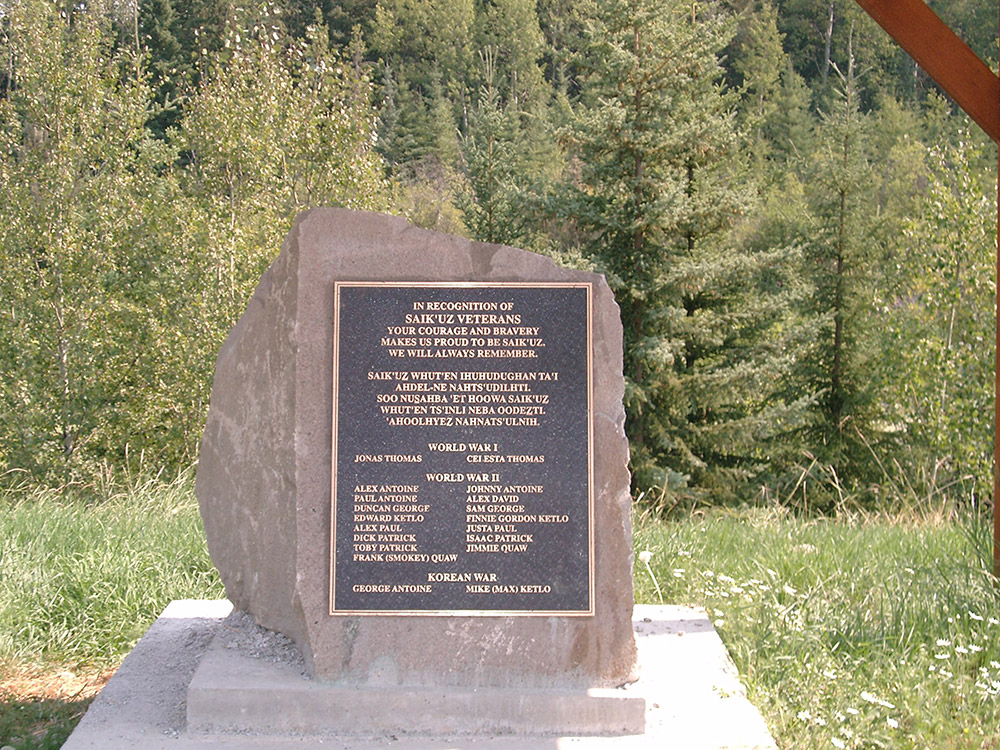Dominic (Dick) Patrick, war hero, activist (born 1920 in Saik’uz First Nation, near Vanderhoof, BC; died 1980 in Saik’uz First Nation).
Early Life
As a boy, Dick Patrick helped take care of livestock on his family’s farm. He attended the Lejac Residential School (see Residential Schools in Canada) and continued to work on the farm after he left school. He also trapped and sometimes worked in mining and forestry.
Second World War
Dick Patrick enlisted in the army in 1942. After training, he joined the 5th Anti-Tank Regiment and became a member of the crew of an M10 self-propelled 17-pounder anti-tank gun. The unit provided support to the 4th Canadian Armoured Division.
By September 1944, Canadian units had advanced into Belgium. On 8 September, 4th Division units were ordered to capture a crossing over the Ghent Canal at the village of Moerbrugge. The Argyll and Sutherland Highlanders of Canada were to make the assault, followed by the Lincoln and Welland Regiment.

Military Medal
By 10 September, the two battalions had established a small bridgehead on the canal’s east side. It was limited to about 275 m in depth, however, due to heavy enemy fire. Early that morning, Canadian engineers completed a Bailey bridge over the canal.
Dick Patrick and his M10 crew then crossed the bridge. After the M10 fired on several suspected enemy positions, it became difficult to pinpoint the exact location of the enemy. Patrick got permission to go ahead on foot to find them. Despite enemy fire, he succeeded in getting into the middle of an enemy machine-gun position and opened fire with his machine gun.
The recommendation for an “Immediate” Military Medal for Patrick notes: “His daring attack completely surprised the enemy.” Patrick captured 55 Germans and cleared out a strong point that had pinned the infantry down for approximately two days. The extension of the bridgehead was due in large part to Patrick’s daring.
Patrick received his Military Medal from King George VI in a ceremony at Buckingham Palace on 23 October 1945. He took the opportunity to tell the King about the discrimination his people faced in Canada. When Indigenous people went into Vanderhoof, he said, “…they were not allowed to go into restaurants, use public toilets and had to come in the back door of a grocery store to buy groceries. We spoke for a long time about the injustice to my people. He told me he would endeavour to help my people.”

Post-War Life
Dick Patrick was home in British Columbia by April 1946. During his first visit to Vanderhoof, he walked into the Silver Grill Café and ordered a meal. Like all other Indigenous people who tried to use the café, Patrick was denied service and told to leave. When he refused, the owner called the Royal Canadian Mounted Police (RCMP), who arrested Patrick and charged him with disturbing the peace.
A judge sentenced Patrick to six months in the notorious Oakalla Prison. Patrick requested the assistance of Maisie Hurley, a First Nations activist who had founded Canada’s first and only Indigenous newspaper at the time, The Native Voice. Hurley succeeded in obtaining early release for Patrick.
Once released, Patrick returned to Vanderhoof by bus. As soon as he got off the bus, he walked back into the same café and ordered a meal. He was refused, arrested and sent back to prison. Patrick repeated his protest 10 times and was sent to Oakalla each time. On each occasion, Hurley secured his release.
Legacy
When Dick Patrick died, he was buried with full military honours. Although his brave fight for equality was not recognized at the time, he is remembered today for his courage and determination in fighting for Indigenous rights.

 Share on Facebook
Share on Facebook Share on X
Share on X Share by Email
Share by Email Share on Google Classroom
Share on Google Classroom


